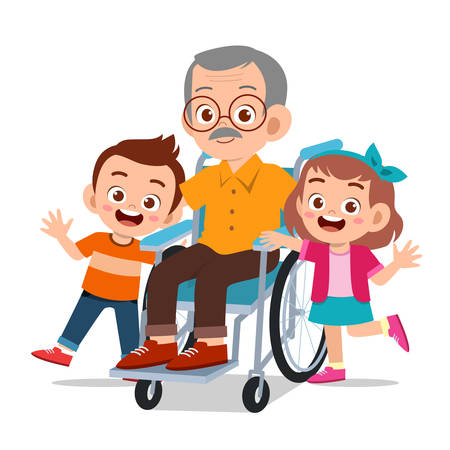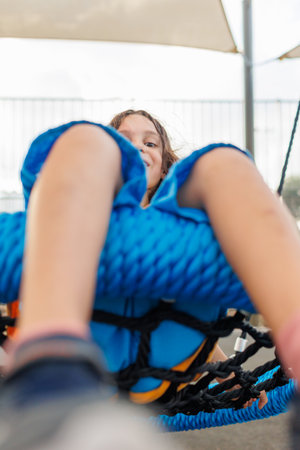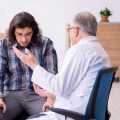Introduction to Community-Based Pediatric Orthopedic Rehabilitation
Pediatric orthopedic rehabilitation is a specialized field that supports children with musculoskeletal conditions, injuries, or disabilities. In the United States, community-based pediatric orthopedic rehabilitation focuses on providing these services within a child’s local environment—such as at home, in schools, or in neighborhood clinics. This approach is designed to help children achieve their best possible physical function while remaining connected to their families and communities.
Why Community-Based Care Matters
Community-based care is important because it brings support closer to where children live and learn. It recognizes that every child’s needs are unique and that recovery is more effective when family members are actively involved. By offering services outside of traditional hospital settings, community-based rehab can make therapy more accessible, less stressful, and better aligned with daily routines.
Key Benefits of Community-Based Pediatric Orthopedic Rehabilitation
| Benefit | Description |
|---|---|
| Accessibility | Services are provided in locations convenient for families, reducing travel time and costs. |
| Family-Centered Care | Families are encouraged to participate in therapy sessions and decision-making. |
| Cultural Relevance | Care can be tailored to respect each family’s cultural values and practices. |
| Consistency | Therapies can be integrated into daily routines at home or school. |
| Holistic Support | Focuses on the child’s overall well-being—physical, emotional, and social development. |
The Role of Family-Centered Care in the US
In the United States, family-centered care is a core principle of pediatric rehabilitation. This means parents, caregivers, and sometimes even siblings work closely with therapists to set goals and practice exercises. American healthcare providers value open communication and shared decision-making. Community-based programs often provide education and support for families so they feel confident helping their child outside of therapy sessions.
Common Settings for Community-Based Rehab
- Home visits: Therapists come to the family’s house for personalized sessions.
- School-based programs: Children receive therapy during the school day as part of their Individualized Education Program (IEP) or 504 Plan.
- Community clinics: Local health centers offer group or individual therapy close to where families live.
- Parks and recreation centers: Some activities use adaptive sports or play for rehab goals.
This approach helps ensure that pediatric orthopedic rehabilitation is not just about medical treatment but also about supporting children in real-life situations, empowering families, and building strong community connections across the US.
2. Key Community Resources and Services
Pediatric orthopedic rehabilitation in the United States is supported by a variety of community-based resources. These services are designed to help children with physical challenges maximize their abilities and improve their quality of life. Below are some of the most common resources families can access across American communities.
Early Intervention Programs
Early Intervention (EI) programs are available in every state for infants and toddlers (birth to age 3) who show signs of developmental delays or disabilities, including orthopedic conditions. These programs offer services such as physical therapy, occupational therapy, and family education, typically provided at home or in community settings. Parents can contact their local health department or school district to begin the referral process.
School-Based Therapy Services
Once children reach school age, many receive therapy through their public school’s special education program. Physical therapists (PTs) and occupational therapists (OTs) work within schools to help students participate fully in classroom and playground activities. Services are provided under federal laws like IDEA (Individuals with Disabilities Education Act), ensuring that eligible students receive support at no cost to families.
| Service Type | Age Group | Setting | How to Access |
|---|---|---|---|
| Early Intervention | 0-3 years | Home/Community | State EI Program Referral |
| School-Based Therapy | 3-21 years | Public Schools | IEP/504 Plan through School District |
| Adaptive Sports Programs | All ages | Parks/Recreation Centers/Clubs | Local Nonprofits & Recreation Departments |
| Healthcare Partnerships | All ages | Clinics/Hospitals/Community Centers | Pediatrician or Local Health System Referral |
Adaptive Sports and Recreation Opportunities
Many communities in the U.S. offer adaptive sports programs designed for children with orthopedic needs. These might include wheelchair basketball, adaptive swimming, or inclusive playgrounds. Organizations like the YMCA, Special Olympics, and local park districts often have specialized teams or classes that help kids build confidence, skills, and friendships.
Examples of Adaptive Sports:
- Wheelchair basketball and tennis
- Sled hockey and adaptive swimming
- Youth track and field events for mobility device users
- Inclusive dance and martial arts classes
Local Healthcare Partnerships and Support Networks
Pediatric orthopedic rehabilitation is most effective when there is collaboration among healthcare providers, schools, families, and community organizations. Many hospitals have outreach programs that connect families with social workers, care coordinators, or parent support groups. These partnerships make it easier to find resources such as transportation assistance, financial aid programs, or specialized medical equipment vendors.
Quick Tips for Families:
- Talk to your child’s pediatrician about local resources.
- Connect with parent advocacy groups for peer support.
- Ask your school’s special education team about available therapies and accommodations.
- Look up local adaptive recreation programs through parks or nonprofit organizations.
This network of services helps ensure that children with orthopedic needs—and their families—can find the right supports close to home throughout their growth and development.

3. Navigating Insurance, Access, and Funding
Understanding the US Healthcare System for Pediatric Orthopedic Rehabilitation
In the United States, getting the right care for children who need pediatric orthopedic rehabilitation can be challenging. Parents and caregivers often have to navigate a complex healthcare system, which includes both public and private insurance options, various financial assistance programs, and a number of common barriers that can make accessing care difficult.
Types of Insurance: Public and Private Options
Families seeking community-based pediatric orthopedic rehabilitation usually rely on one or more of these insurance types:
| Insurance Type | Description | Who Qualifies? |
|---|---|---|
| Medicaid | Government-funded health coverage for low-income families and children. Covers most rehab services if medically necessary. | Low-income families; eligibility varies by state |
| CHIP (Children’s Health Insurance Program) | Covers children in families with income too high for Medicaid but who cant afford private insurance. | Children under 19; eligibility depends on family income and state rules |
| Private Insurance | Plans provided by employers or purchased directly. Coverage for rehab services varies widely. | Families with employer coverage or those who buy their own insurance |
Navigating Public Programs: Medicaid and CHIP
Medicaid and CHIP are critical resources for many families. Each state manages these programs differently, so what is covered—and how to apply—can change depending on where you live. Both programs usually cover essential rehabilitation therapies, orthotics, and durable medical equipment needed for orthopedic conditions. However, there may be limits on the number of therapy sessions or requirements for prior authorization.
Private Insurance Plans: What to Watch Out For
If your child is covered by a private insurance plan, it’s important to review your benefits carefully. Not all plans cover every type of therapy or equipment, and you might encounter:
- High deductibles or copays for therapy sessions
- Limits on the number of visits per year for certain services (like physical or occupational therapy)
- The need to use “in-network” providers to get full coverage
- Prior authorization requirements before starting treatment
Financial Assistance Programs Beyond Insurance
If insurance doesn’t fully cover what your child needs, there are additional resources that may help:
- State-based Early Intervention Programs: For children under age 3 with developmental delays or disabilities.
- School-based Services: Public schools must provide therapy services listed in a child’s Individualized Education Plan (IEP) at no cost to families.
- Nonprofit Organizations: Groups like Shriners Hospitals for Children or United Cerebral Palsy offer free or reduced-cost care and equipment.
- Crowdfunding & Community Support: Some families turn to online fundraising platforms or local charities for extra financial support.
Common Barriers Families Face in Accessing Care
Even with different funding sources available, many families encounter obstacles such as:
- Bureaucratic Red Tape: Lengthy application processes, lots of paperwork, and confusing eligibility rules can slow down access to needed services.
- Lack of Local Providers: In some areas—especially rural communities—it can be hard to find pediatric specialists or therapists nearby.
- Cultural and Language Barriers: Non-English-speaking families may struggle to understand their options or communicate with providers.
- Siloed Systems: Medical care, school services, and social programs are often not well coordinated, making it tough for parents to manage everything their child needs.
Key Takeaways for Families Seeking Pediatric Orthopedic Rehabilitation Support
Navigating insurance and funding in the US can feel overwhelming. Knowing the basics about available programs—public insurance like Medicaid and CHIP, private insurance plans, plus other financial aid—can help families get started. Asking questions, reaching out to hospital social workers or patient advocates, and connecting with local nonprofits can also provide valuable support along the way.
4. Family and Community Advocacy
Empowering Families as Advocates
Families play a crucial role in the rehabilitation journey of children with orthopedic needs. In the US, parents and caregivers are encouraged to become advocates for their child’s health, education, and access to services. Empowering families means giving them the tools, knowledge, and confidence to speak up for their child’s rights, collaborate with professionals, and navigate complex systems.
Strategies for Family Advocacy
| Strategy | Description | Example Resources |
|---|---|---|
| Education and Training | Learning about pediatric orthopedic conditions and available services | Parent Training and Information Centers (PTIs), online webinars |
| Communication Skills | Building skills to effectively communicate with healthcare providers and schools | Workshops, support from advocacy organizations |
| Understanding Rights | Knowing legal rights under IDEA and ADA | Disability rights groups, PTIs, legal aid clinics |
| Peer Networking | Connecting with other families for shared experiences and support | Local parent groups, national online forums |
Building Support Networks
No family should feel alone on their journey. Support networks provide emotional encouragement, practical tips, and help navigating challenges. These networks can be local or virtual, formal or informal.
Types of Support Networks
- Parent-Led Groups: Local meetups or online communities where parents share advice and resources.
- Professional Networks: Connections with therapists, doctors, social workers, and educators specializing in pediatric orthopedics.
- Mental Health Supports: Counseling services or support groups focused on coping strategies for families.
- Cultural Communities: Groups that understand unique cultural perspectives and language needs.
Engaging with Local Organizations
The US has a wide variety of organizations dedicated to supporting children with disabilities and their families. Two key types are Parent Training and Information Centers (PTIs) and disability rights groups.
Key Organizations at a Glance
| Organization Type | Main Role | How They Help Families |
|---|---|---|
| Parent Training and Information Centers (PTIs) | Provide training, information, and resources for parents of children with disabilities | Help families understand special education laws, access services, improve communication with schools/providers |
| Disability Rights Groups | Advocate for disability rights at local, state, and national levels | Offer legal advice, advocate for policy changes, support inclusion efforts in schools and communities |
Tapping into Community Resources
If you’re looking to get involved or need support in your area, start by searching for your state’s PTI through the Center for Parent Information & Resources (https://www.parentcenterhub.org/find-your-center/) or contacting local chapters of national organizations like United Cerebral Palsy or The Arc. Many hospitals and rehabilitation centers also have connections to community programs that can help you build your advocacy skills and find peer support.
Together We’re Stronger
The path to effective community-based pediatric orthopedic rehabilitation is easier when families feel informed, supported, and connected. By learning advocacy strategies, building strong networks, and engaging with organizations ready to help, families can ensure their children have every opportunity to thrive in their communities.
5. Culturally Responsive and Inclusive Care
Understanding the Importance of Cultural Responsiveness in Pediatric Orthopedic Rehabilitation
Community-based pediatric orthopedic rehabilitation in the US serves children and families from diverse backgrounds. Its essential for care providers to recognize and respect cultural differences, beliefs, and values when designing and delivering rehabilitation services. This approach not only helps build trust but also ensures that all families feel welcomed, heard, and empowered during their rehabilitation journey.
Guidelines for Equitable and Inclusive Services
Equitable care means making sure every child has access to quality rehabilitation regardless of their race, language, socioeconomic status, or ability. Here are some key steps to guide providers in delivering culturally sensitive and inclusive services:
| Key Area | Action Steps |
|---|---|
| Language Access | Offer interpreter services and translated materials; use plain language to explain medical terms. |
| Cultural Awareness Training | Provide ongoing training for staff on cultural humility, bias awareness, and trauma-informed care. |
| Community Partnerships | Collaborate with local organizations and faith groups to reach underserved populations. |
| Diverse Staffing | Recruit staff from varied backgrounds to reflect the community served. |
| Family-Centered Planning | Involve families in goal-setting; respect traditional healing practices when safe and appropriate. |
| Accessibility | Ensure facilities are physically accessible; offer flexible hours and telehealth options for working families. |
Meeting the Needs of Underserved Populations
Pediatric patients in rural areas, low-income communities, or recent immigrant families may face additional barriers to accessing rehabilitation. Providers can make a difference by:
- Offering mobile clinics or home visits for families who cannot travel easily
- Connecting families with social workers or case managers who can help them navigate insurance or public assistance programs
- Partnering with schools to support students’ participation in both academics and therapy activities
- Listening to caregivers concerns about stigma or discrimination and advocating for their rights in school or community settings
Fostering Inclusive Participation in Rehabilitation Activities
Every child deserves a chance to participate fully in therapy and community life. To foster inclusion:
- Create group sessions that celebrate different cultures through music, art, or storytelling as part of therapy activities
- Encourage peer support groups where children and parents can share experiences in a safe environment
- Adapt sports or recreational activities so all children, regardless of ability level, can join in fun events like adaptive soccer or inclusive playground days
- Acknowledge religious holidays and dietary preferences when planning meals or group gatherings during rehab programs


